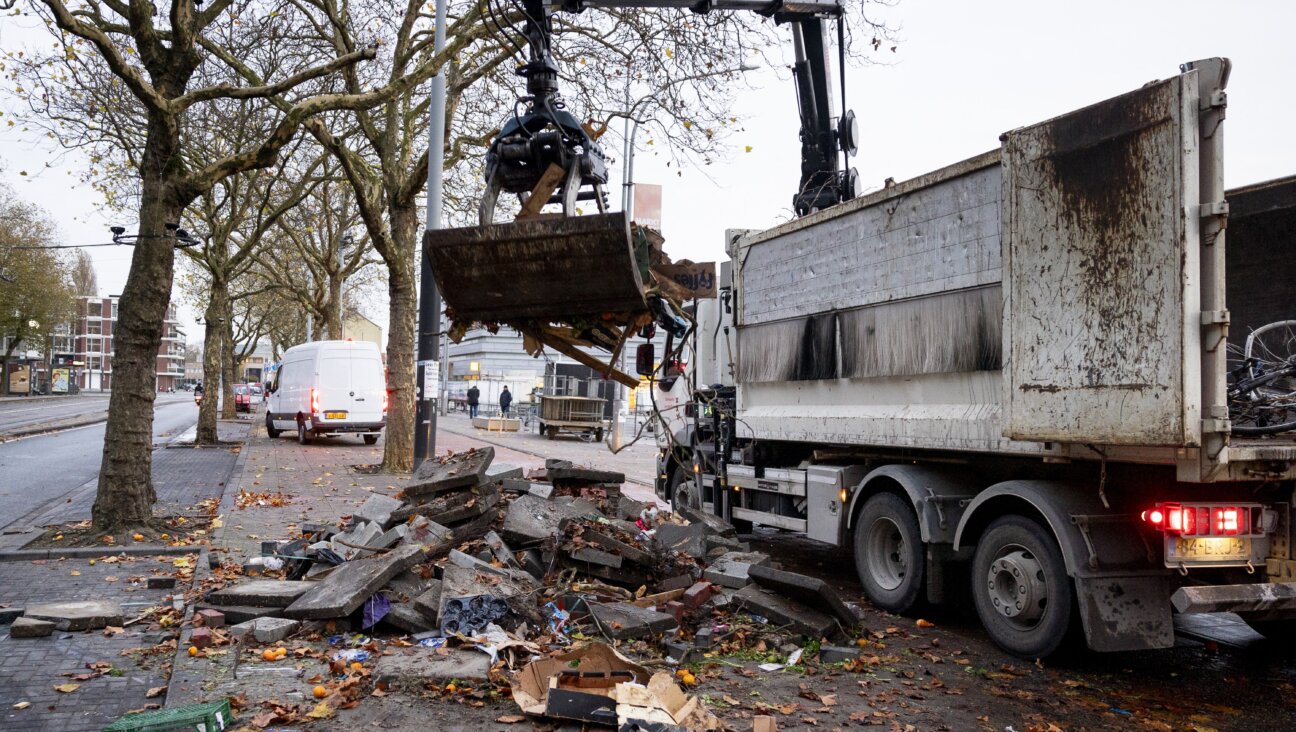When the ‘Most Moral Army’ Goes to War
At the end of her rendition of “Had Gadya,” the Israeli singer Hava Alberstein adds new lyrics: “On all other nights I ask the four questions, but tonight I have one more: ‘How long will the cycle last? How long will the cycle of violence last? The chased and the chaser, the beaten and the beater. When will all this madness end? I used to be a kid and a peaceful sheep; today I am a tiger and a ravenous wolf. I used to be a dove and I used to be a deer; today I am a tiger and a ravenous wolf. I used to be a dove and I used to be a deer; today I don’t know who I am anymore.’”
War is surely hell, and if you enter war having been taught and believing that yours is the most moral army in the world, it can be especially hellish, because the logic of war and the logic of morality grapple with each other and rip you into pieces. Over there, a woman and child walk slowly toward you. How close do you let them come? When does caution require you to shoot? Shall you shoot to kill, or merely to wound, and if to wound, then what? Leave them to bleed, or seek aid? And over there, in that building, the one that was supposed to be vacant, that shadow in the window — a sniper preparing to shoot at you, your comrades, or a child doing his homework? You have pledged not to harm innocents, but your pledge to protect your fellows has priority. When do the pledges clash, force you to choose between what you believe and what you believe?
In the Israeli context, these are not abstract questions, brain-teasers for sophomores studying philosophy. They are urgent questions, and there is substantial detailed commentary specifying the way a soldier is to think about them. Much of that commentary has lately been provided by Orthodox rabbis, but the Israeli army continues to provide both instruction and reading material directly confronting the ethical dilemmas peculiar to low-intensity warfare in congested urban spaces.
But on February 27, both Haaretz and Ma’ariv reported that something rotten had happened in the course of Israel’s assault on Gaza. “Israeli forces killed Palestinian civilians under permissive rules of engagement and intentionally destroyed their property, say soldiers who fought in the offensive,” Haaretz reported. The newspaper articles were based on the transcript of an evening’s conversation with soldiers who were alumni of a gap-year pre-army preparatory program that is named after Yitzhak Rabin and was co-founded by the kibbutz movement.
As may be imagined, the reports generated a tempest of discussion and debate. The soldiers’ testimonies were early on tagged by critics as a concoction of Israel’s dissident left, hence easily dismissed. Soon enough though, the debate was displaced by other scandals and crises and by the army’s promise of a thorough investigation into the allegations — an investigation now officially concluded, the soldiers’ testimonies dismissed as hearsay, “purposely exaggerated.” But the sense that something’s amiss lingers, and additional reports of Israeli excesses from the Associated Press, Human Rights Watch, Palestinian witnesses and other Israeli soldiers have surfaced.
So much depends on context. Assuming there were Israeli excesses, are we talking here about the inevitable “few bad apples” who lack the requisite ethical sensitivity? Or are we talking about a climate, over the years, in which the enemy has been dehumanized, hence its brutalization rendered acceptable? Perhaps, as has been widely reported, it’s those right-wing Orthodox rabbis who have defined the conflict as a war between the Children of Light and the Children of Darkness. Or, more simply, is what happened inevitable in a densely populated urban space (human shields and all that)? Maybe it was really spawned by the clear intention of the military planners to deal heavy enough a blow to re-establish Israel’s deterrent power, and who believed that the way to do that was to go slightly berserk, to prove that Israel would not be hamstrung by its own announced commitment to moral restraint.
There’s no shortage of contextual hypotheses, and all have some explanatory value, but there’s one more of particular poignancy that’s rarely if ever put forward: The regular army is composed, in the main, of children, late teenagers. We are entitled to expect more of them than, say, spring break behavior, but it would be unfair to expect of them full-blown angst. And that, of course, may well be one reason armies everywhere prefer gung-ho 18- and 19-year-olds to reflective adults. Who needs or wants angst on the field of battle? Here, then, a question that warrants close examination: Was there a significant difference in behavior between the youngsters doing their compulsory service and the reservists, their older colleagues?
Doves, deer, tigers, ravenous wolves: Even “the most moral army in the world” cannot emerge from war unblemished. War is hell, remember?
A message from our CEO & publisher Rachel Fishman Feddersen

I hope you appreciated this article. Before you go, I’d like to ask you to please support the Forward’s award-winning, nonprofit journalism during this critical time.
At a time when other newsrooms are closing or cutting back, the Forward has removed its paywall and invested additional resources to report on the ground from Israel and around the U.S. on the impact of the war, rising antisemitism and polarized discourse.
Readers like you make it all possible. Support our work by becoming a Forward Member and connect with our journalism and your community.
— Rachel Fishman Feddersen, Publisher and CEO






















